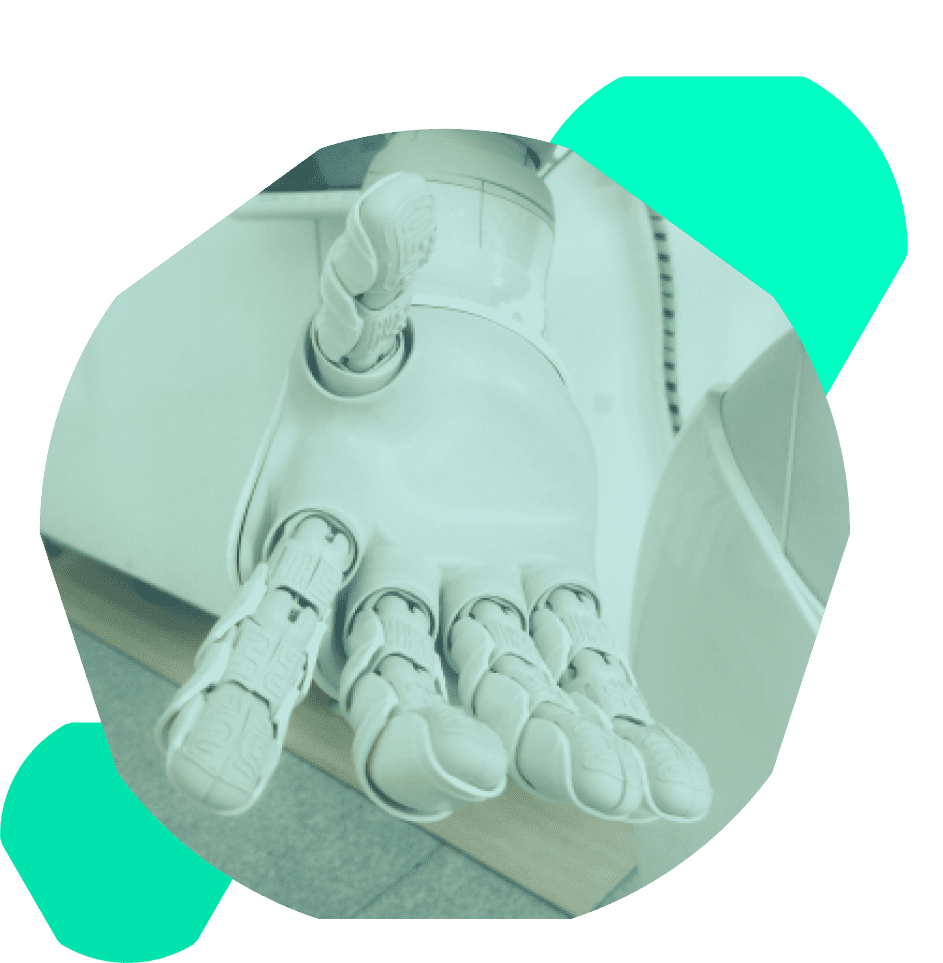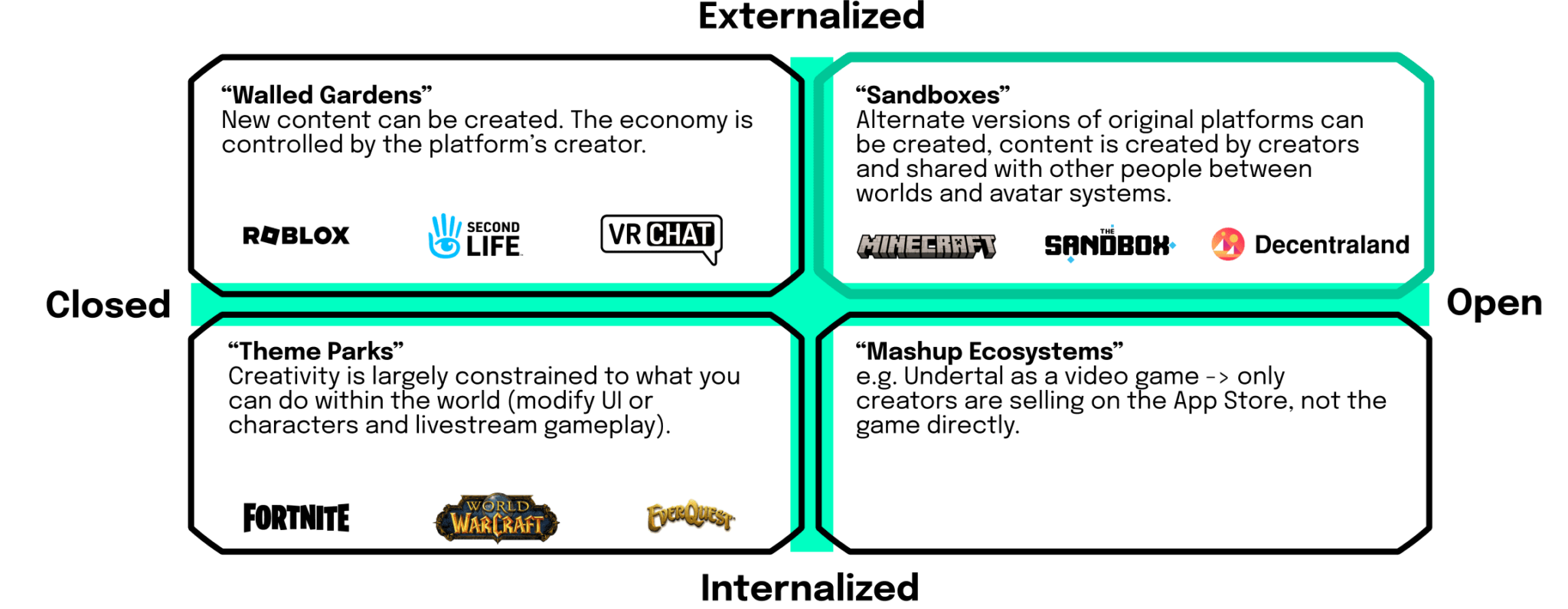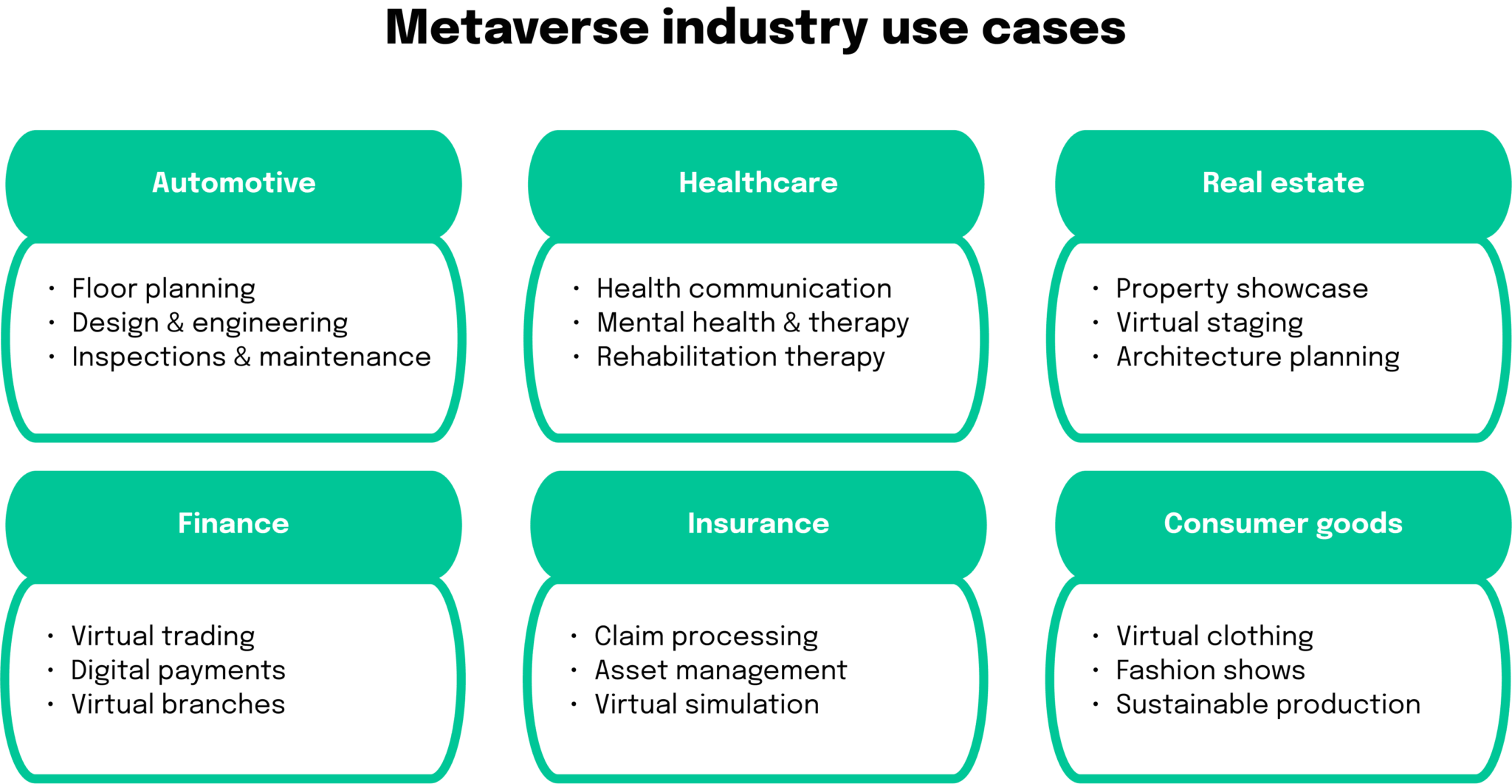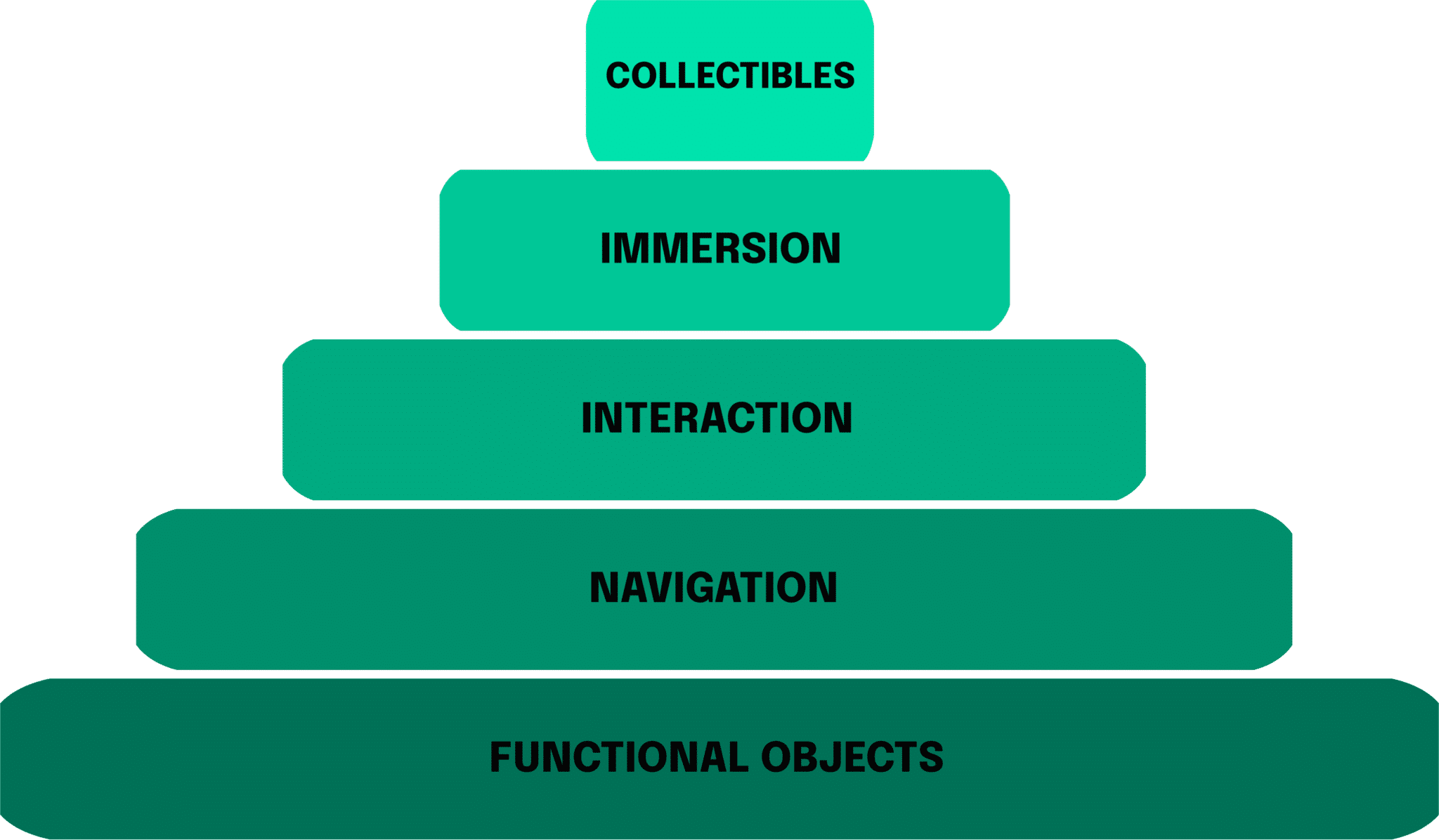18 min reading time
Why do we even care about the Metaverse?
We are standing on the precipice of a new era in the realm of technology and innovation. An era where the line between the digital world and the physical one blurs – a reality made possible by the metaverse. This exciting frontier isn’t merely a realm for gaming and virtual reality enthusiasts; it’s fast becoming the center stage for businesses, tech visionaries, and investors alike. As a leading venture capital and venture building firm in Germany, we are pleased to chronicle our journey into the metaverse, sharing our accomplishments and the projects that have shaped our path thus far.
The Metaverse offers an expansive, virtual realm that is becoming increasingly significant for businesses. It provides an opportunity for companies to deliver more engaging brand experiences, opening the door to unprecedented interactions that foster a stronger bond between brands and consumers. This enhanced engagement subsequently leads to higher customer retention rates and lower Customer Acquisition Costs (CACs), paving the way for increased profitability. Additionally, the Metaverse is a platform teeming with untapped potential for generating new revenue sources, providing businesses with diverse streams of income. Moreover, its digital nature allows for potential reductions in operational costs, thus further enhancing a company’s bottom line. Ultimately, businesses that engage with the Metaverse stand to gain a competitive edge in this rapidly evolving digital landscape.
You want to know more about the future vision of the Metaverse? Then take a look at our latest Metaverse article.
Mapping our course: Navigating the Metaverse economy
We analyzed different aspects of the metaverse. To categorize and classify the virtual worlds out there, we defined two criteria: grade of openness and externalization. The first dimension extends from “Open” to “Closed,” denoting the extent to which a platform welcomes communal contributions – is it a collective digital playground or a tightly controlled creative kingdom? The second dimension stretches from “Externalized” to “Internalized,” assessing a platform’s level of interoperability. This metric evaluates whether the platform allows assets, content, and creations to be shared and utilized across various worlds, expanding the scope of interaction and engagement.

We discerned that to truly flourish in the metaverse, our focus needed to lie within the sector of externalized open economies. These “digital canvases” are where businesses can construct without constraints. This economic model is enticing because of its inherent features: a decentralized structure, user-driven content, and potential for unlimited interaction between diverse worlds and platforms.
After meticulous deliberation, Decentraland became our platform of choice. The reasons? It encapsulates all the tenets of an externalized open economy. While also providing more benefits and advantages: (1) Possibility to log in as a guest with a random avatar within 5 clicks and no need for a wallet (2) A consistent, open world ready for discovery, supported by an open 3D model format. Decentraland exemplifies digital democracy, where the community drives changes, features, and project funding (3) The level of influence an individual has corresponds directly with the assets they possess.
The exploration begins: Building our first prototype
As explorers in the digital universe, our initial undertaking was to craft a basic model — a foundational element of our journey into the metaverse. We commenced this stage with a humble array of functionalities, concentrating primarily on guiding users through a selection of our current projects and merely redirecting to external websites such as the Lissi Website. Our fundamental goal was to gain practical experience with the technology, an essential step we accomplished by utilizing tools like Blender and the Decentraland Editor.
You might wonder why it was so important for us, or any company venturing into the metaverse, to create a prototype on a decentralized platform. The explanation resides in the inherent benefits of prototyping.

Creating a prototype is comparable to sketching an architectural plan prior to erecting a structure. It provides us the opportunity to verify concepts, pinpoint potential obstacles, and trial various solutions before fully dedicating resources. It serves as a safety cushion, a creative workshop, and a launching pad, all in one.
When we speak of Web3, which signifies a decentralized online environment propelled by blockchain technology, the importance of a prototype becomes even more pronounced. It grants us the ability to delve into, experiment with, and comprehend the unique facets of the technology, ranging from smart contracts to tokenized assets, decentralized finance to NFTs. Furthermore, it allows us to understand how these facets intertwine with user interfaces and experiences, enabling us to develop a more engaging, secure, and user-friendly product.
We explored the infinite landscape of the metaverse with our prototype as a navigational tool and blueprint, guiding us toward a future full of opportunities.
Learning from pioneers: Examining successful Metaverse use cases
As we charted our course through the metaverse, we understood the importance of learning from existing pioneers across diverse industries. Our focus was to glean valuable insights from sectors like automotive, healthcare, real estate, finance, insurance, and consumer goods, each offering unique lessons and perspectives.
Our analysis aimed to accomplish two key objectives. First, we aimed to uncover opportunities for embedded finance and investing within the metaverse. This integration represents a powerful symbiosis, leveraging the capabilities of the decentralized digital space to deliver seamless financial services across a spectrum of industries.
Second, we intended to distill proven strategies and innovative ideas from successful use cases, helping us understand how we could create meaningful value within the financial sector in the metaverse.
This analysis, brought to life through a series of vivid visual aids, offers a fascinating snapshot of the current metaverse landscape. It underscores the profound potential of this emerging technology, as well as the myriad ways we can tap into it to deliver unique and valuable solutions. Let take a look at important industry use cases.

Identifying important cross-industry use cases in the Metaverse
As we navigated through the metaverse, we realized that this digital realm is not confined by traditional industry boundaries. It thrives on a holistic, integrated approach where different sectors intertwine, interact, and create mutual value. Recognizing this, our fourth step was to identify cross-industry use cases — applications and strategies that could transcend specific industry contexts and offer value universally.
Understanding cross-industry use cases is vital for devising effective strategies to drive value. These patterns allow us to spot opportunities where we can bridge gaps between industries, foster collaborations, or innovate solutions that cater to multiple sectors simultaneously. They provide a wide lens to view the metaverse, enabling us to unlock its potential in a holistic manner rather than from the perspective of isolated industries.
The relevance of cross-industry use cases is particularly pronounced in the metaverse due to its inherently interconnected nature. In this realm, users are not merely consumers, they’re creators and contributors, their actions influencing multiple sectors concurrently. Identifying cross-industry use cases allows us to tap into this dynamic interplay, creating solutions that resonate across the spectrum and thus drive substantial value.
Seven big use cases come to mind:
- Learning & training: Virtual training is found to be four times faster than traditional learning methods with increased retention and empowerment to handle different situations.
- Employee onboarding: onboarding new hires through virtual tours of digital twins and getting familiar with the culture values and ethics of the company.
- Virtual branches: for consulting, this could be a new form of interaction with clients. Sales activities through avatars can generate new revenue streams.
- Product launches: the metaverse is a cost-effective way of reaching a target audience globally at a single point of contact.
- NFTs: NFTs are an effective marketing measure to create brand awareness, and to build communities that attract customers.
- Advertising: No physical constraints give new opportunities to innovative marketing activities.
- Gaming: Making brand experiences for customers more fun and engaging, especially when focusing on younger generations such as GenZ.
By looking beyond the silos of industries, we can better harness the power of the metaverse, creating a digital ecosystem that fosters growth, integration, and innovation across multiple sectors. As we move forward on this exciting journey, it is these cross-industry connections that will shape our approach and guide our path.
Exploring financial services use cases in the Metaverse
As our voyage into the metaverse advanced, we found ourselves drawn closer to familiar territory: the financial services industry. With this sector as our focal point, we honed in on a number of compelling use cases, each brimming with exciting prospects in the digital vastness. Let’s take a look at the most important financial use cases close to the core businesses of banks.
The first such pathway led us to the notion of Digital Wallets within the metaverse. Just as wallets are integral to our daily transactions in the physical world, their digital equivalents are vital for seamless commerce in the virtual sphere. Digital Wallets streamline transactions, empowering users to purchase, sell, and exchange assets with convenience.
Subsequently, we plunged into the realm of Credit and Loans. The idea of borrowing and lending isn’t new, but within the metaverse, it is reinvigorated by blockchain technology and smart contracts. With the potential for decentralized finance (DeFi), users can avail of financial services in a transparent, secure, and efficient manner. Digital assets are being bought more and more often and some of them have a very high value (e.g. bored ape NFTs). These digital assets could be used as collateral for banking products such as credit and loans.
Finally, we directed our attention towards innovative services, such as 3D visualizations for decision-making and pioneering consulting possibilities. In a world where data reigns supreme, the capability to visualize intricate financial data in an engaging, immersive, and easy-to-grasp format could revolutionize decision-making processes. Similarly, consulting services can be reimagined, offering personalized and immersive experiences that transcend traditional video calls or chats.
As our exploration progresses, we aim to align these use cases with the core business objectives of banks. The goal? To harness the metaverse’s power to improve, evolve, and broaden the financial services landscape, creating value not only for our company but for the entirety of the financial ecosystem.
Get all set to purchase land in Decentraland
Venturing into the realm of virtual property procurement in Decentraland might seem like navigating through unexplored territories, but once you grasp the key stages, the procedure becomes much more manageable. Here’s an in-depth walkthrough based on the course we took:
- Opting for a Crypto Exchange: Our maiden step was to choose a cryptocurrency exchange that caters to business accounts. After a thorough review, we shortlisted our options to Coinbase and Börse Stuttgart. Our final choice was Coinbase due to its support for Decentraland’s native currency, MANA, an essential component for purchasing land within the metaverse.
- Establishing a Business Account: Having chosen the exchange, we initiated the process of setting up a business account. This step demands a higher degree of examination compared to personal accounts. We completed an extensive Know Your Customer (KYC) procedure with Coinbase, which involved the submission of various documents and providing comprehensive background information about our business and its principal personnel.
- Funding the Account: The subsequent step was to infuse funds into our account. Businesses encounter limited options for this phase – we settled for a SEPA transfer, the only feasible option for businesses. Post-initiating the transfer, we waited a couple of business days for the transaction to process and reflect in our Coinbase account.
- Procuring Cryptocurrency: With a cash-infused account, we were equipped to procure cryptocurrencies. We bought MANA for land procurement in Decentraland and a minor quantity of ETH to cover transaction fees, also known as “gas fees” and to integrate with our digital wallet. To ensure optimal control and ward off price fluctuations, we employed Coinbase Exchange and set a limit order marginally above the market price.
- Shifting to a Hardware Wallet: To ensure the security of our recently procured assets, we transferred the bought MANA and ETH to a cold wallet, specifically, a Ledger hardware wallet, via the Ethereum network. We executed a test transaction with a small amount before moving the complete balance to prevent potentially irreversible losses due to errors.
- Establishing a MetaMask Account: The MetaMask Wallet offers web browser plugin, and a mobile application. This was our selected tool for managing private Ethereum keys. We established an account, enabling us to securely hold our ETH and other tokens and interact with decentralized apps (DApps).
- Linking the Hardware Wallet with MetaMask: Ultimately, to interact with Decentraland’s marketplace, we connected our Ledger hardware wallet with MetaMask. This integration allows us to execute transactions within the metaverse securely and conveniently.
Securing our spot: Acquiring land in Decentraland
Navigating the process of property acquisition in Decentraland’s virtual worlds involves a specific procedure. Below is a summary of our method:
- Scouting the Decentraland Marketplace: Our adventure started at the Decentraland marketplace, a central node for transacting all on-chain assets in Decentraland. The Atlas View provided us an aerial perspective of the entirety of the landscape, including all plots, estates, roadways, districts, and squares. These markers, each with its unique characteristics and color scheme, were our navigational tools within the metaverse.
- Identifying the Perfect Parcel: We based our choice of land on essential considerations like closeness to roads and squares, adjacent districts, the character of surrounding plots, and possibilities for territorial expansion. Guided by these criteria and our budget, we opted for an estate strategically located near major districts, ensuring a potentially high volume of visitor traffic
- Executing the Transaction: Procuring land in Decentraland was a two-pronged procedure. Initially, we triggered the purchase on the marketplace, and then validated the transaction via MetaMask. As novice purchasers, we needed to allow the marketplace to access our MANA. The purchase represented a swap of addresses on the blockchain rather than the conveyance of a tangible file.
- Finalizing Financials: For accounting purposes, we maintained a detailed record of every stage of the process, encompassing account funding, currency exchanges, cryptocurrency transfers, and finally, the property purchase. This meticulous record-keeping was vital for ensuring transparency, tracking costs, and dealing with tax implications.
Embarking on this venture of virtual property acquisition has been a fascinating journey that exemplifies the fusion of finance and technology in the metaverse. Our newly acquired property now forms the bedrock for our future initiatives within this lively virtual universe.
Designing the virtual space: Creation of the neosfer lounge
1. Finding inspiration: Our design voyage was initiated with a comprehensive ideation session, bringing together developers, UI/ UX designers, and crucial stakeholders. We delved into Decentraland’s digital terrain, drawing enlightenment from how other establishments had digitally incarnated their identities within the metaverse. This stage proved insights and design guidelines that subsequently influenced our creative direction.
2. Accumulating team insights: To infuse our lounge with an authentic embodiment of neosfer’s persona, we took measures to integrate contributions from every team. Exclusive interactions with each team permitted us to pinpoint vital components that could best symbolize their work, principles, and aspirations within the lounge’s design. This collaborative methodology enabled us to form a design that genuinely resonated with our shared values and varied capabilities.
3. Conceiving for Participant Experience (PX): In Decentraland, a user’s journey transcends conventional UI/UX boundaries. Here, the focus is on the PX, obliging us to conceive for interactivity, engagement, and immersion. Given this, we devised a design pyramid model, wherein each tier symbolized a distinct aspect of PX:

– Functional objects: These components were ones that participants could either view or interact with. They were further divided into:
- Navigation: To tackle Decentraland’s unique navigational challenges, we ingeniously incorporated an elevator to enable swift movement across levels.
- Interaction: We incorporated interactive videos about neosfer and the IMPACT FESTIVAL, information pertaining to our teams, and clickable dialogues for our staff’s NPC avatars. An Open Jobs Board connected directly to our website, and WWF’s NFTs were on display, supplemented with detailed descriptions about the project.
- Immersion: Our objective was to transform the lounge into a deeply engaging experience. To achieve this, we embedded a podcast episode into the environment.
- Collectibles: To augment participant involvement, we provided visitors with the opportunity to mine a limited number of POAPs during our Between the Towers event.
Our detailed design process, together with careful execution, culminated in the creation of a Decentraland virtual lounge that was not only visually striking but also an authentic reflection of neosfer’s ethos.
Building the Web 3.0 design: Constructing the neosfer lounge in Decentraland
1. Creating 3D authenticity: To construct compelling virtual spaces, we employed 3D modelling techniques, crafting detailed digital replicas of tangible objects. While pre-made elements offer convenience, custom-made models are crucial for demonstrating unique company characteristics. These models encapsulate shape, visual traits like textures, and animated movements to engage with users. We ensured peak software performance by taking into account the platform’s rendering capacities and adhering to standardized formats for cross-functionality. Every employee avatar in the lounge was collaboratively designed with the corresponding staff member, promoting company-wide participation in our virtual undertaking. We utilized tools such as Blender, Ready Player Me, and Mixamo in this process.
2. Infusing interactivity through coding: The behavior of the virtual environment and user interactions are governed by software coding. Depending on the setting, we either incorporated our custom code or employed existing building blocks to create user interfaces and functionalities.
3. Integrating infrastructure: Our infrastructure enables the inclusion of external services into the virtual space, thereby broadening its capabilities and permitting the existence of the metaverse. Elements such as network synchronization, databases for persistent environments, and decentralized storage and computing power are crucial. Our toolkit consists of GCP/Firebase for database and external service hosting, Livepeer Studio for decentralized event streaming, and Web 3.0 for administration and NFTs.
4. Focusing on PX: As detailed in our design phase, sustaining a high-quality PX is a core aim in constructing our lounge. This influences every stage of the building process, ensuring we cultivate an interactive and immersive environment that resonates with users.
Testing use cases in the neosfer lounge
1. Revolutionizing virtual gatherings: We strive to digitize and enrich conventional event elements such as presence, networking, and interactive gestures. Virtual platforms offer an unparalleled avenue for exhaustive data visualization, like digital replicas. To this point, we’ve managed to live-stream five episodes of “Between the Towers” from Frankfurt to our rooftop deck in Decentraland. The level of participation exceeded expectations, with over 65 attendees, over 40 Proof of Attendance Protocol tokens (POAP mined, and over 500 interactions with the lounge, of which 80% redirected users to our official website. With the event’s runtime, this equates to around 100 interactions per hour – a substantial feat for a business in our field. For our streaming, we leveraged the capabilities of Livepeer Studio, a decentralized video broadcasting platform.
2.POAPs – A Gateway to Web3: Proof of Attendance Protocol Tokens , a class of NFTs, act as digital commemorative tokens for confirming event participation. They provide a transition to the Web3 universe, helping brands recognize token owners and provide exclusive benefits, thereby nurturing community development. At our recent Between the Towers gatherings, we’ve been dispensing POAPs both in person and in Decentraland, all adorned with AI-created artwork. Upon arrival at the Neosfer plot in Decentraland, POAP holders receive a unique welcome and access to privileged content.
3. Lissi – Paving the Way for Reliable Digital Personas: To address the issue of digital identity in the metaverse, we created a prototype using Lissi, a solution for self-sovereign identity. This system permits users to store various identity forms securely, such as employee and customer cards, in a digital wallet, endowing the user with complete control over data disclosure. These identities can be stored in both physical and virtual wallets concurrently. We’ve showcased two use cases for Lissi. Firstly, access limitations: we devised a private area that can only be accessed with a specific demo customer card. This could extend to validating attributes like age without disclosing the exact figures. Secondly, counselling: verifying avatar identities is crucial for effective consultation. Our demo illustrates this procedure, allowing consultants to be identified via a name tag and request customer data only visible to them. This advancement ensures secure engagements in the metaverse when handling sensitive data. Check out our demo here!
Unleashing Possibilities: The innovative and collective approach of the Metaverse Circle
As we navigate the path toward a digital tomorrow, surmounting the obstacle of initial unfamiliarity becomes a communal endeavor. This is where the Metaverse Circle shines, providing a stage for innovative organizations to co-invent, learn, and lead the way. Advancing beyond the confines of conventional sectors, the Metaverse Circle aims to explore the untapped potentialities of the Metaverse, XR, and Web 3.0.
The essence of the Metaverse Circle lies in addressing common challenges that discourage businesses from venturing into the Metaverse: comprehending the Return on Investment (ROI), formulating a solid vision and roadmap, resource allocation, and guiding user adoption.
Within this framework, we join forces with industry trailblazers to analyze and construct use cases for the Metaverse, XR, and Web 3.0. Through identifying opportunities, and authenticating them with professionals and prospective clients, we co-develop these instances using a collaborative creation method, adhering to a rigorously evaluated process. This community also serves as a forum for thought leadership, contributing to the generation of enlightening papers and the coordination of collaborative events.
For our adventurous partners, we present the chance to lease our vacant parcels for the establishment of lounges, with our developers readily available to address any questions.
The advantages of becoming a part of the Metaverse Circle are diverse. Primarily, it offers reduced upfront investment and risk; the strength of knowledge exchange and networking; and a hands-on approach to the Metaverse and beyond. This palpable value proposition furnishes partners with the resources and knowledge to maintain a competitive edge in this digital landscape.
A Glimpse into the future: Harnessing the Metaverse's infinite possibilities
Our maiden voyage into the Metaverse, encapsulated by our lounge and its innovative use cases, is merely the beginning of a more significant journey. We look forward to further exploring the boundless opportunities the Metaverse presents.
We’re presently on the cusp of initiating a wide range of initiatives in partnership with our associates. These entail designing an NFT Collection for the forthcoming Impact Festival ’23, investigating the prospect of a token-gated community within the finance sector, envisioning a VR Experience tailor-made for Commerzbank’s newest members, and evaluating the potential applications for Apple Vision Pro.
By sharing our hands-on journey in the Metaverse, our intention extends beyond simply narrating our experiences. We aim to inspire collaborative exploration and joint invention. If you find yourself captivated by this intricate process, enthusiastic to assess and co-construct use cases with us, or keen to learn more about the comprehensive reach of the Metaverse Circle, we would be delighted to engage with you.
If you would like to know more details about the process, evaluate and develop use cases together with us or get the full package about the Metaverse Circle, please contact us (giacomo.fanigliulo@neosfer.com).
neosfer GmbH
Eschersheimer Landstr 6
60322 Frankfurt am Main
Teil der Commerzbank Gruppe
+49 69 71 91 38 7 – 0 info@neosfer.de presse@neosfer.de bewerbung@neosfer.de

